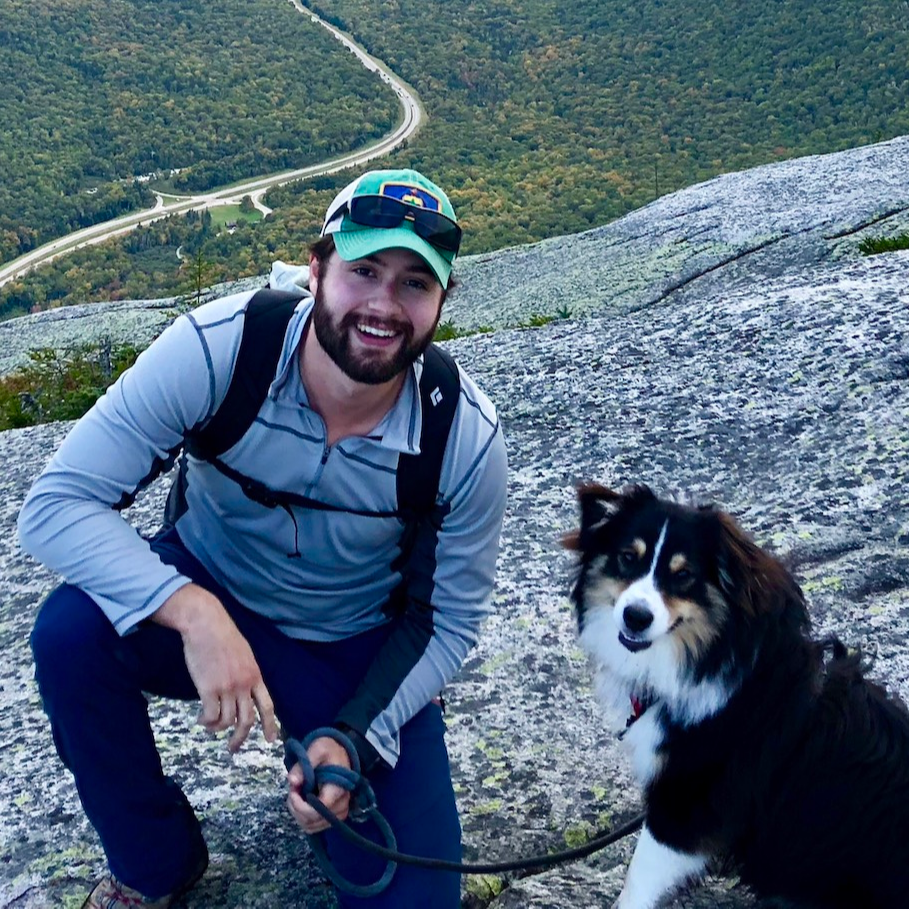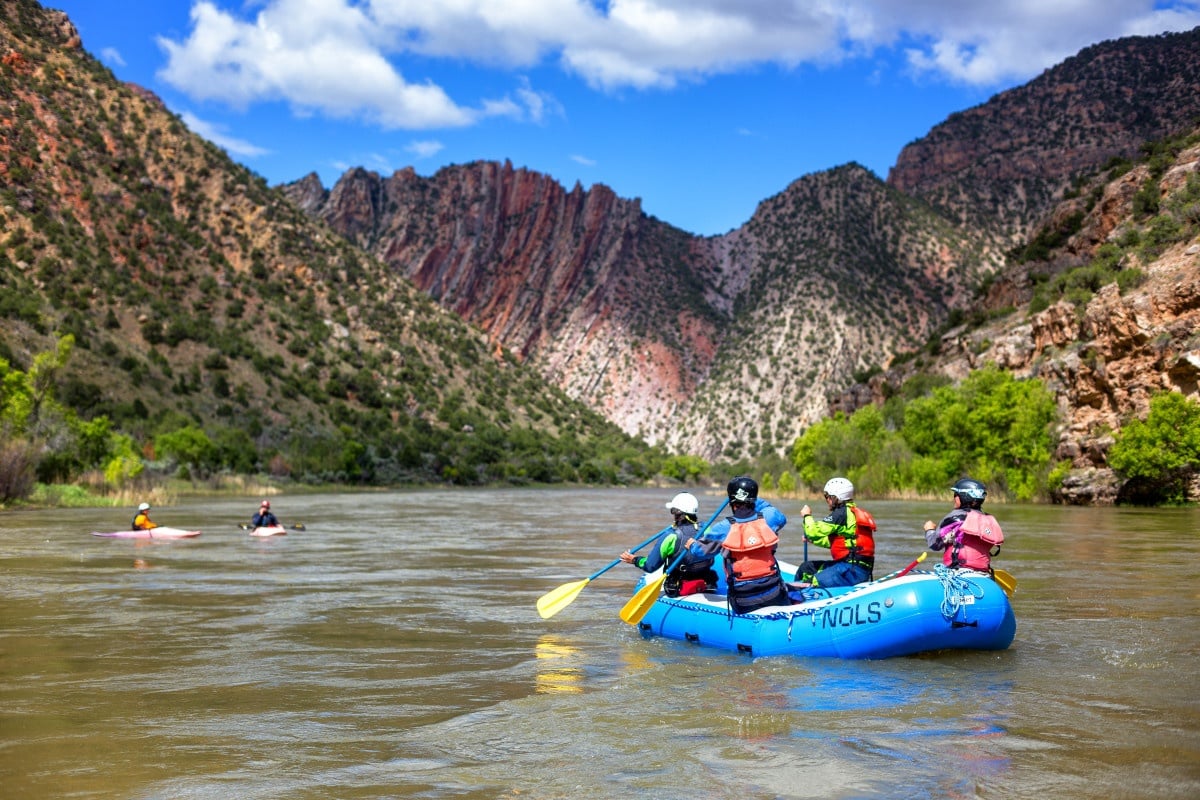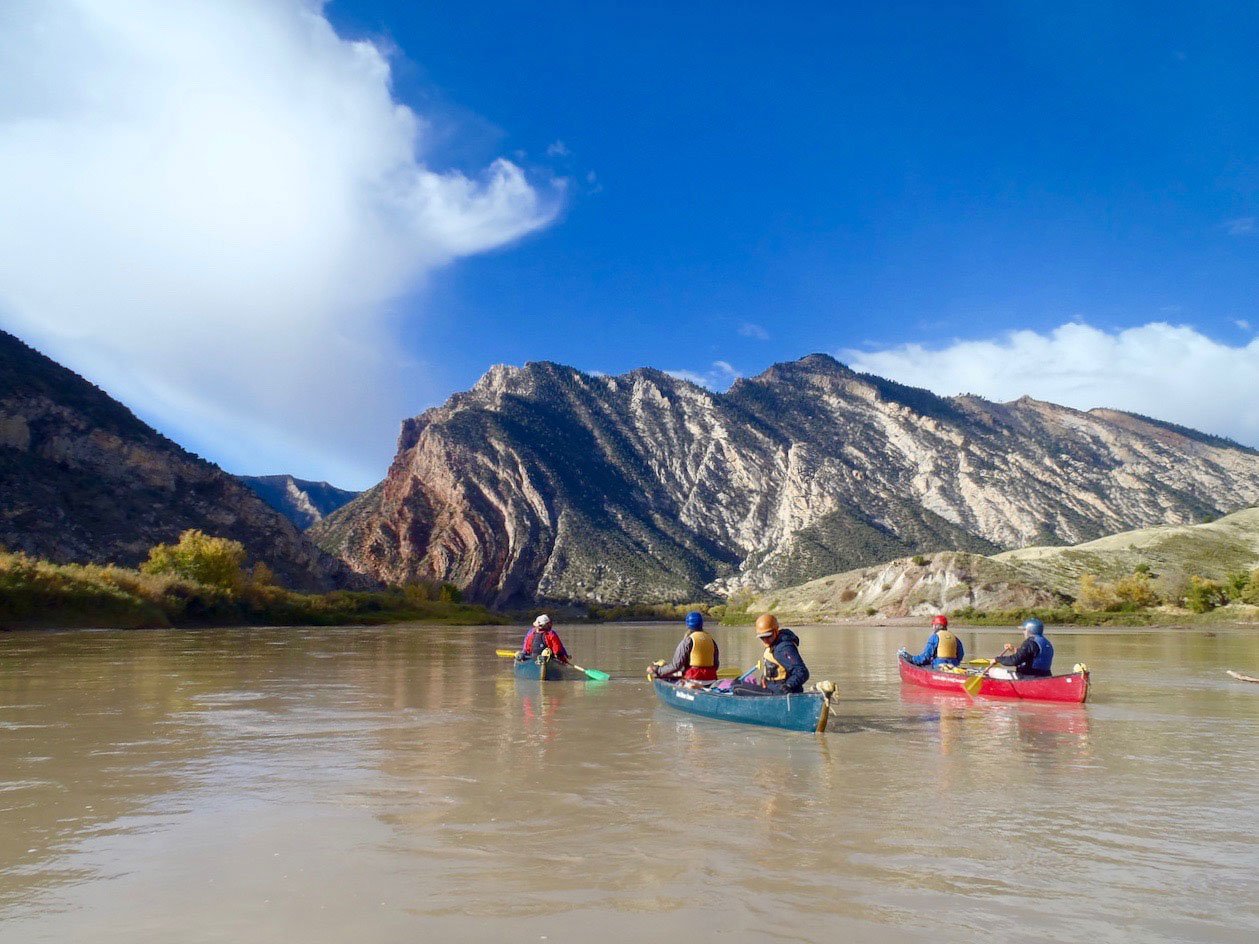
“It’s impossible to be bored running a rapid,”according to Fabio Oliveira.
He would know. Despite spending 289 weeks in the field as NOLS instructor, he’s never gotten tired of leading river expeditions. A long-time instructor from Brazil, Fabio has spent the last five years primarily teaching whitewater courses that are full of rapids, cheering, and giggling.
For SJ Johnson, a NOLS river instructor and program supervisor, one of her favorite aspects of leading river trips is “getting to interact with the riparian zone—the area within a certain distance of a river that can support ecological diversity. When you think about the desert-like canyons of Utah, where NOLS runs many of our river courses, there’s pretty low ecological diversity, but within 100 yards of the river there is so much plant and animal life.”
River trips are a great way to become proficient in a new skill and visit beautiful backcountry areas.
Why Do a NOLS River Course (Hint: It's Really Fun)
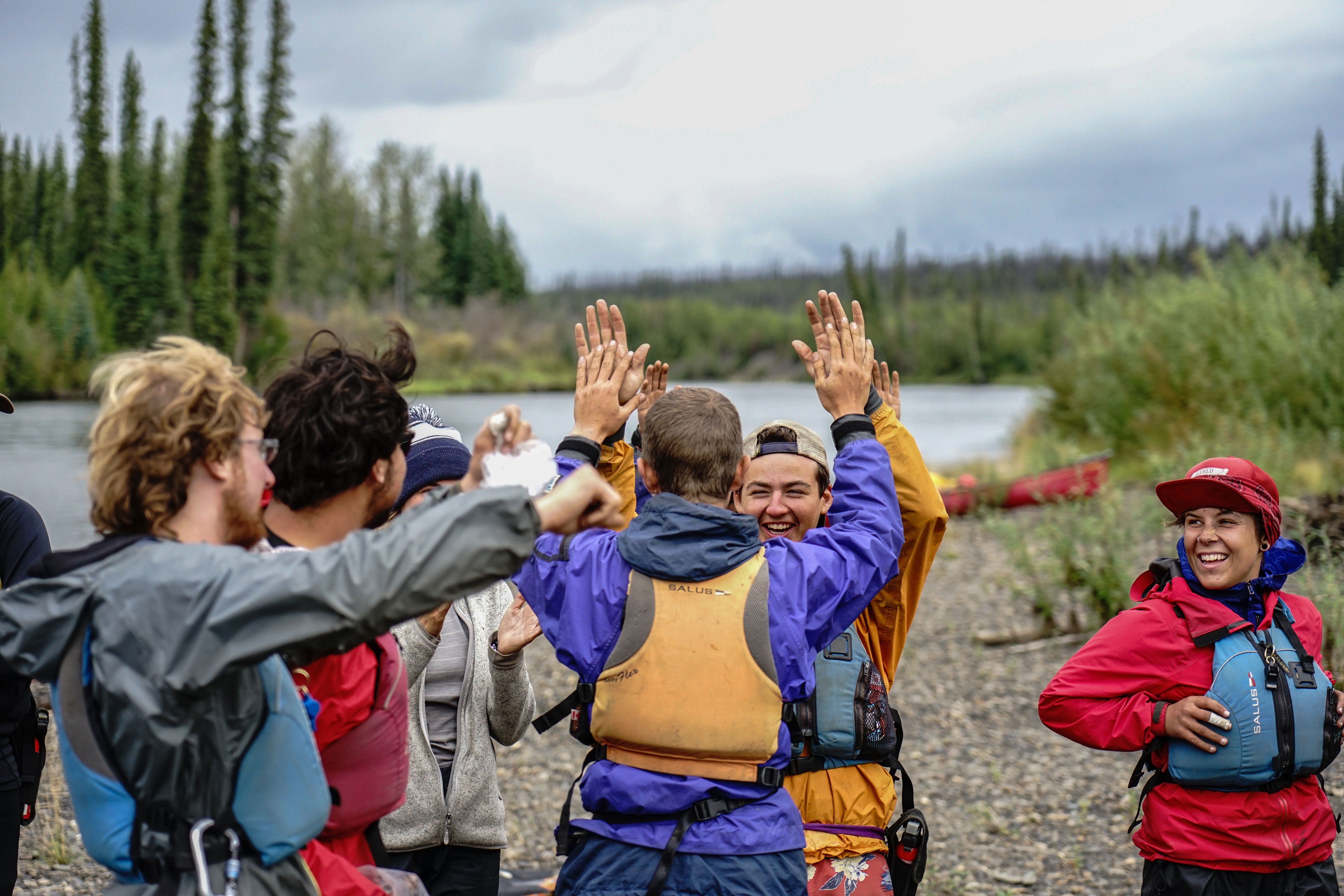
Simply put, NOLS river courses are a blast. Talking with instructors and students, you’ll find their enthusiasm contagious.
“Expeditions are just a ton of fun. Every day, there is swimming, beach camping, splashing, and laughter,” explains Fabio. “Rivers provide a wondrous way to travel through the land. You’re literally going with the flow of nature on this incredible journey.”
The unstoppable force of rivers means that even the most impenetrable wilderness areas can be accessed with the right craft. SJ adds that “river travel is very efficient; you can go so far and see a huge variety of things. For example, Utah’s Desolation Canyon is one of the most remote places that NOLS goes to. It’s very inaccessible by car or foot, and the only reasonable way to get there is by river travel.”
As on any NOLS course, there is no experience required, and river trips “are low-committing ways to engage with all the beautiful aspects of nature without having to experience too many of the hardships,” says Fabio.
Course Types
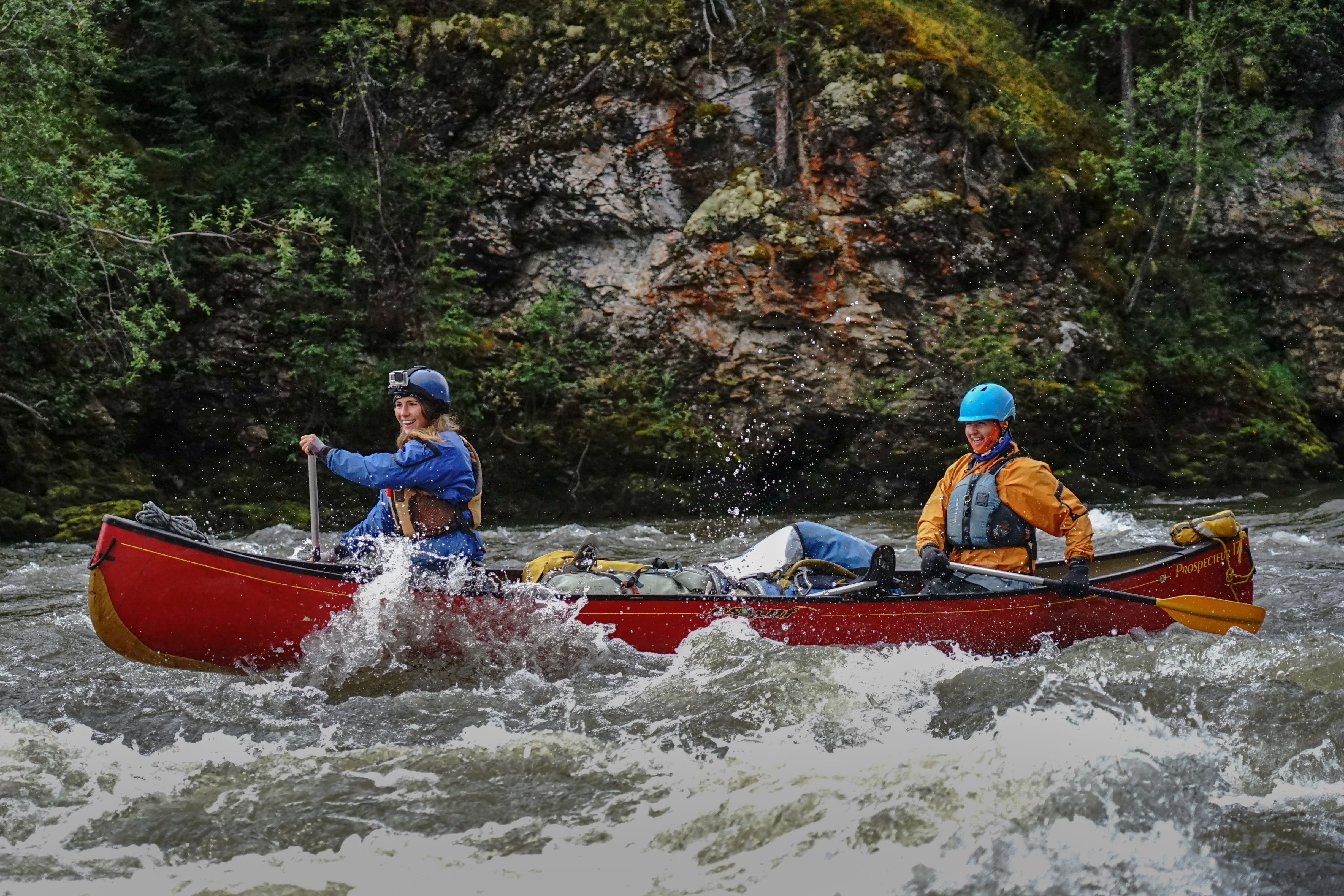
Your experience on a river with NOLS will vary widely depending on location, season, and craft—NOLS operates on rivers all over the world. Canoes, kayaks, and rafts are the three primary craft used on expeditions.
Canoes are favored in the Yukon, Rio Grande, and Adirondacks, while kayaks and rafts are often used together on the same course in Utah and India, though this can vary by course.
“The Wilderness Medicine and Rescue Semester, for example, is usually raft only. In the summer the courses are almost always a mix of kayak and rafts,” explains SJ. “During these raft-supported expeditions, almost all of the gear is loaded on rafts with oar rigs. Most of the students travel in kayaks, and we bring a fleet depending on student sizes and needs.”
On courses featuring both kayaks and rafts “there’s an expectation that students learn both,” explains SJ. However, “there’s room for them to get excited and invested in one craft they particularly enjoy. Most evenings we’ll sit down and talk about craft choice, and we’ll usually switch off crafts every two days.”
NOLS offers numerous courses with a river or ocean component in locations all over the world. Whether you want to canoe through the New Zealand backcountry, or whitewater kayak through remote desert corridors in the American Southwest, you can learn a wide array of river skills in a variety of natural classrooms.
What to Expect on a Course
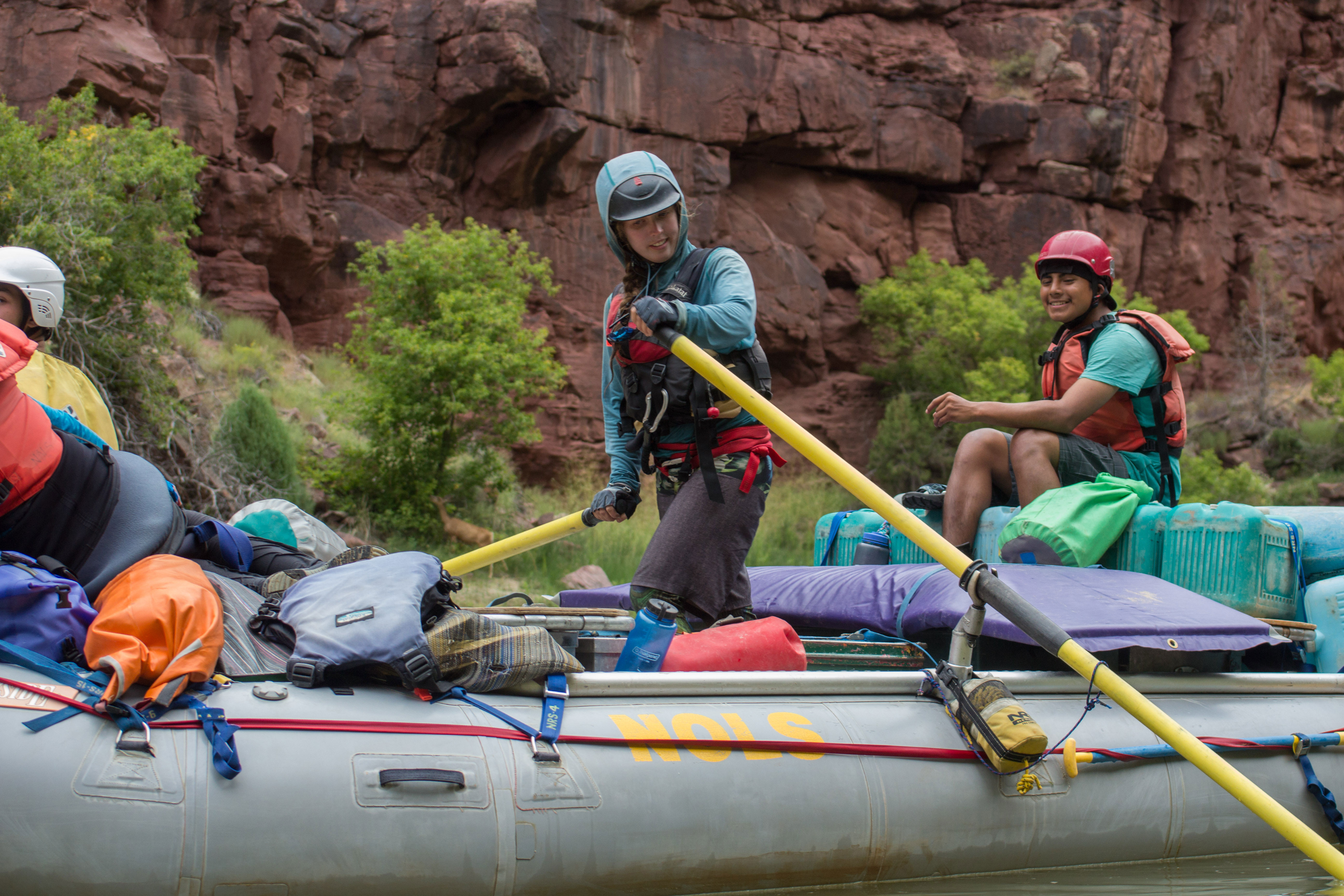
“Whitewater paddling is like dancing with water. It’s a very kinesthetic way to interact with nature since you need to be very engaged with the river,” explains Fabio. As you are introduced to the basics of the whitewater dance, you will build paddling competence, river-specific risk management techniques, and awareness of safety and rescue methods.
“What is neat about NOLS is that we have this great mix of really high-quality instructors” explains SJ. “If you’re looking for this level of instruction outside of NOLS, you’d have to take a multi-day class with a kayak school or try to become a raft guide.
Here, instructors aren’t just guiding people down the river, we work with students so they have the skills to organize and make good decisions on their own trips. There is a really big focus on investing in skill development and awareness of safety and rescue skills. A student can show up with zero paddling knowledge and walk away very competent.”
Students travel during the day in distinct “pods,” or small groups of boats. Groups will “pod-up” with a designated leader and come up with strategies for how to run rapids. SJ says student leaders will learn to decide if “the group is going one at a time down a rapid, or in small groups. They will have to learn to manage risk and decide makes the most sense to keep the group safe.”
Unlike many other NOLS expeditions, whitewater courses stay as a large group for the entire trip without breaking into smaller, student-led expeditions at the end of the course. Fabio believes this means that “there is a lot of teamwork that needs to happen on a river trip. With a lot more personal and group equipment that needs to be dealt with day to day, there is more working as a full team to do bigger tasks.”
A big bonus? Many courses carry coolers and get to have fresh vegetables, even for a month of camping.
It’s also important for student leaders to keep in tune with the group dynamic. While some enjoy the challenge and adrenaline rush of big rapids, others are looking for something more mellow, and rotating leaders of the day learn to take these preferences into account in their decision making.
Fabio says that students must also practice more self-leadership on a river course. Ultimately, it’s the student’s responsibility to evaluate their skills well and not flip their boat and get swept away.
Compared to most guided river trips, environmental studies are a central part of the NOLS curriculum. In order to be good stewards of the environment, there are special considerations that NOLS river courses account for.
“Because the riparian zone is very delicate and susceptible to human impact, our gray water goes in river, while human and solid waste gets packed out,” says SJ.
“We try really hard to minimize our footprint on pre-impacted areas that have seen lots of people already. We still keep up bear camping protocols and use a groover.”
What’s a groover, you ask? SJ describes it as a “river-specific system for desert river corridors. It’s a big metal box that you poop in. It has a sealable lid, and we set it up just like a latrine.”
Beyond the NOLS Course
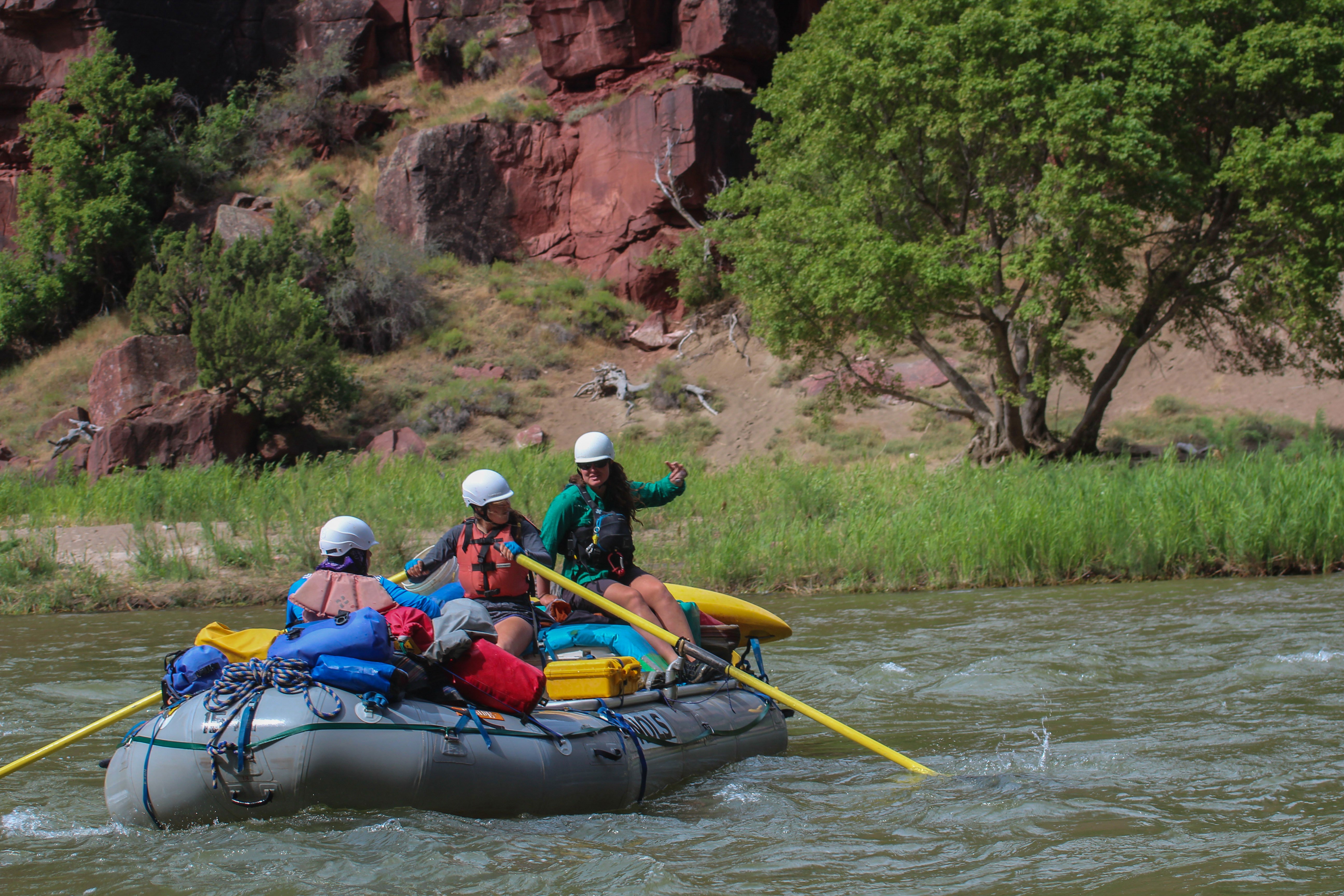
By the end of a course, students often walk away quite competent. “While it’s student specific, some may leave with a solid skill set and the ability to run Class II-III rapids,” explains SJ.
Perhaps most importantly, after their expeditions, students are aware of their limits, and what steps are needed to continue their education. An expedition is a great entry point into the paddling community, and an excellent way to get connected with paddling clubs and organizations.
The benefits of a NOLS river expedition are long-lasting. SJ believes that “A NOLS course could be an entry point to guiding.” With enough initiative during a course, “a grad could be quite marketable to a commercial guide company.”
Above all, river trips have shown Fabio how to live in the moment. He says it’s taught him to “really enjoy where you are! If there’s anything we want the students to learn, it’s to celebrate the value of being on an outdoor trip with an awesome community.”
- Canoeing
- Whitewater
- Skills
- Kayaking
- River
- Education
- Whitewater Rafting
- Nols Expeditions
- Stories
- Rafting
Written By
Rob Motley
Rob is the Spring 2019 NOLS Marketing and PR intern, a Wilderness First Responder, and a Wind River Wilderness graduate. Growing up in New England, he found his love for the outdoors while exploring the White Mountains of New Hampshire. He enjoys hiking, fly fishing, and questioning his life choices while ice climbing.


